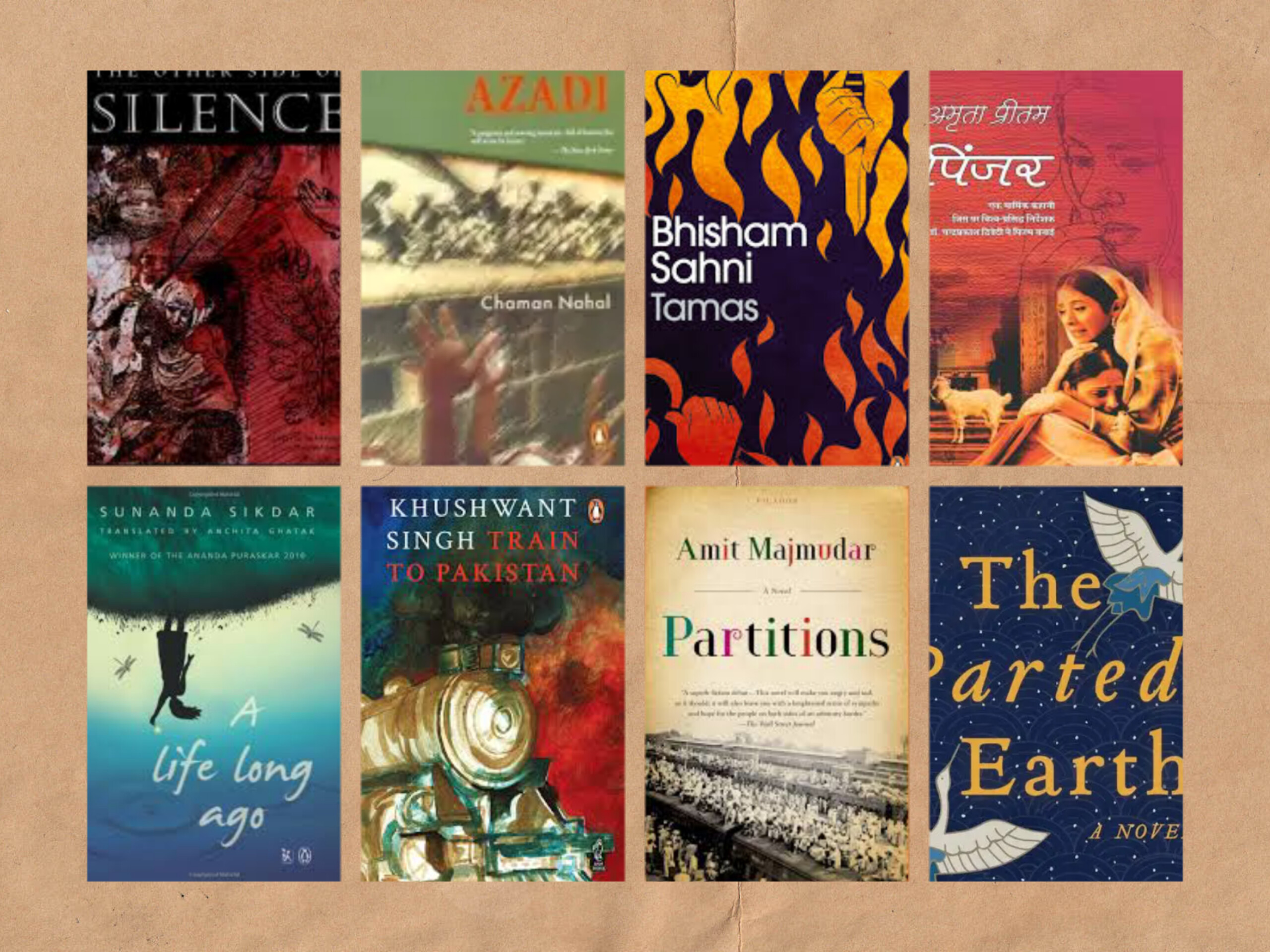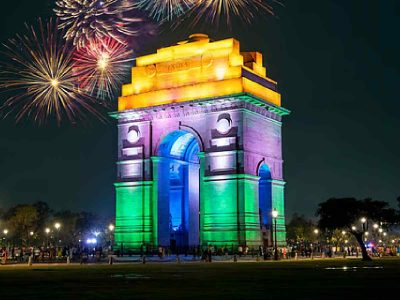June 20 has been declared by the United Nations as World Refugee Day. India has a long history of offering refuge to those in need. In the national capital, Rajouri Garden, West Patel Nagar, and Rajinder Nagar in West Delhi; Khan Market in Central Delhi; Malviya Nagar, Kalkaji, and Lajpat Nagar in South Delhi; and North Delhi’s GTB Nagar are all places where refugees from Partition settled over time.
To commemorate the day, here are ten refugee narratives from across India and their stories of survival and resilience.
The Parted Earth – Anjali Enjeti
Anjali Enjeti’s The Parted Earth tells the story of young Deepa, who lives in Delhi during Partition. Her lover, Amir, is forced to flee India but promises to come back and marry her. Worried about Deepa’s safety, her grandparents take her to London, where she gives birth to Vijay.
The other narrative followed by the book is that of Shanthi, who is grief-stricken over her miscarriage and failing marriage. To escape her demons, she begins to search for her estranged grandfather after finding out her father Vijay has abandoned her to look for him. She discovers love notes written by her grandfather Amir, using them as clues to find her way back to her family.
This work of historical fiction is a narrative of grief and hope, taking us on a tour of the world as we watch the far reaches of trauma and how it takes root within the minds of those who survived the Partition.
Azadi – Chaman Nahal
The novel tells the story of Lala Kanshi Ram, a grain merchant who lives in Pakistan with his wife, Prabha Devi and son Arun. He lives in a shared building with a Sikh family—the landlady Amar Vati and her family—the charwoman Padmini and her daughter Chandani, and Mukanda’s mother.
As the Partition of India and Pakistan was announced, all of them had to flee to India. The families venture out of Sialkot and into the new and free India while the riots between Hindus and Muslims intensify.
Through his book, Nahal introduces us to the horrors of the Partition and the injustices inflicted upon the innocent citizens of both countries. The book highlights the pain of broken families and offers the hope of alliances forged in struggle.
A Bit of Everything – Sandeep Raina
Sandeep Raina, in his book, not only tells a compelling narrative but also follows the discourse of a lost home and identity. The novel follows Rahul, a Kashmiri refugee who lives in Delhi. He lives in a barsati alongside his wife Dooraand their young son. His landlord is a questionable man who calls his family ‘Muslim-Brahmans’ because they consume meat. The city is no more forgiving or warm, as Rahul struggles with his identity.
Eventually, he escapes to England, but when he comes back to Kashmir, he must face the journey back to his homeland. This story, while fictional, depicts the very real crisis faced by those whose homes were torn apart by unrest.
The Other Side of Silence – Urvashi Butalia
In her illuminating work of non-fiction, Urvashi Butalia gathers the stories of people who witnessed the brutality of the Partition firsthand, particularly women. The book is divided into eight chapters and delves into the rapes, forced marriages, abductions, and eventually the rescue of these women.
Apart from women, Butalia covers the previously unexplored narratives of children in greater detail. These are stories of communal hate, casteist ideologies, and broken families. Amidst the heart-wrenching tales is the story of Butalia’s own mother, Subhadra Butalia. This historical account is a must-read, one that depicts the partition of not just two nations but also the hearts of two peoples.
The Night Diary – Veera Hiranandani
Based on real-life events, this novel is a work of fiction narrated through the eyes of 12-year-old Nisha. Nisha and her twin, Amil, are half Hindu and half Muslim. After the Partition is announced, their father decides it is no longer safe for them to stay in Pakistan, and they set out on a long journey toward their new home.
As they travel by train and then on foot, Nisha keeps a diary wherein she writes letters to her mother, noting various details of their journey. Her letters reflect her feelings of grief, confusion, and fear. One of the few books seen from the perspective of a child, this novel gives us a Partition narrative through innocent eyes.
Tamas – Bhisham Sahni
Tamas is a book devoid of any central characters. Every chapter introduces us to a new person of a different location, caste, and religion. It is unconventionally written and captures the plight of many caught in the crossfire of the Partition.
There are stories about communists speaking up about the suffering of the middle class, Sikh couples seeking shelter in Muslim areas, and stories of violence. While the British Raj claimed non-interference in religious matters, different religious and political groups held different ideas about the shaping of the countries. All these voices are captured in the chapters of Sahni’s book.
Pinjar – Amrita Pritam
Pinjar is a Punjabi story narrating the tale of Puro, a young girl betrothed to Ramchand. However, tragedy strikes when she is kidnapped by Rashid. Rashid does not wish to kidnap her but is forced to due to an old rivalry between their families.
Also Read: The forgotten refugees who landed in Delhi after Partition
Eventually, she escapes captivity but is turned away by her family. They cannot accept her back because, if they did, their whole family would be slaughtered. When the Partition is declared, Ramchand’s sister is kidnapped, and Puro helps rescue her. The plot explores the religion-based tensions. festering in the community and the pockets of belonging and love stolen amidst hate.
A Life Long Ago – Sunanda Sikdar
Yet another narrative from the perspective of a child, A Life Long Ago, starts with the story of young Dayemoyee. She lives in Bangladesh with her aunt. Over time, she notices how people are leaving the village and new people are taking their place. We see her unaware of the Partition and the changing political scenario.
Eventually, her aunt decides to travel to India as well, where her parents have set up their home. As the novel progresses, we see Dayemoyee as an adult woman. However, when the news of her beloved Majam Dada comes, the floodgates of her memory are opened, and she must confront her past.
Train to Pakistan – Khushwant Singh
Khushwant Singh’s book is one of the most celebrated works in Partition literature. Full of graphic details on trains arriving full of dead bodies and rivers running with blood, the narrative in no way attempts to soften the blow of violence dealt during the Partition.
Also Read: No respite for Capital’s Burmese refugees
It starts with the story of a village named Mano Majra, where Sikhs and Muslims have been living side by side in peace for many years. However, when the violence starts, the Muslims are forced out of their own village. Honest, striking, and gut-wrenching, it is one of the finest books written that tells the story of refugees.
Partitions – Amit Majmudar
Partitions is a plot woven out of multiple narratives during the Partition of India. One storyline traces Keshav and Shankar, two children who enter a crowd to look for their mother, only to end up lost. Simran Kaur, a young girl, runs away from the father who attempts to kill her to prevent her from being raped or kidnapped by men. Meanwhile, Masud, an elderly doctor, travels and helps people after his clinic is burned down.
Consisting of narratives of both childhood and old age, the book gives us multiple perspectives when looking upon the tragic history of India’s Partition.





